No Results Found
The page you requested could not be found. Try refining your search, or use the navigation above to locate the post.

“In the Alberta Rockies, advocates say feral herds are being wrongfully blamed for ecological damage that the province wants to contain, if necessary, with population control.” – The Globe and Mail.
Below we are including a few excerpts from an article that appeared in The Globe and Mail on September 10, 2024.
We also think it is important to note (scroll down) that the Alberta Minister of Forestry and Parks appears to have a vested interest in the eradication of wild horses.
Glover, sitting on a log in the very same forest this summer, says he remembers the protest as a “great resistance” that helped stop the killing of dozens of feral horses near Sundre, Alta. But the resistance is far from over, he stressed, as the provincial government continues to threaten the horses’ very existence.
The carefree creatures are difficult to spot as they roam the foothills of the Canadian Rockies. But Glover, having been around them for years, knows where to look. He calls the horses by name – Stirling, Maverick, One-Eyed Jack – as they graze in fields, gallop through the trees or play fight.
The highest concentration of wild horses in Alberta is in the Sundre area. The province estimated there were 969 horses in 2023, which is just shy of the 1,000-population threshold that triggers immediate action to reduce the herd size through adoption, contraception and, in extreme cases, killing. HAWS, which conducts its own aerial surveys, believes the government’s count is inflated.
Pam Davidson, press secretary for Forestry and Parks Minister Todd Loewen, said there is no cull currently “planned or anticipated” in Alberta. She said the government is adhering to guidelines in its Feral Horse Management Framework, which was developed by a committee that includes wilderness experts, Indigenous groups and academics. “Future committee meetings will include discussions on non-lethal methods of managing feral horses, including adoption and contraception,” Ms. Davidson said.
Alberta Minister of Forestry and Parks, Todd Loewen who introduced the wild horse cull was allegedly denied being appointed to that position – by the (Alberta) Ethics Commissioner – and yes, it’s a cull despite his stating otherwise.
Why was he (allegedly) denied? Could it be because he at one time owned a hunting/outfitting business?
It certainly appears he sidestepped being denied by transferring his hunting/outfitting business to his family.
Talk about a fox minding the hen house.
Politicians count on and often get away with the public not doing due diligence.
Please join us in reaching out to the Ethics Commissioner and asking why Loewen was initially denied the position of Minister of Forestry and Parks.
Let’s see what they have to say – we want them to know that the public is watching and aware.
A follow up conversation/letter can be to ask, “Why is it not a conflict of interest when the outfitting/hunting business is still in his immediate family?”.
Office of the Ethics Commissioner
Suite 1250, 9925 – 109 Street NW
Edmonton, Alberta, Canada T5K 2J8
Telephone Number: (780) 422-2273
Fax Number: (780) 422-2261
E-mail Address: info@ethicscommissioner.ab.ca



The page you requested could not be found. Try refining your search, or use the navigation above to locate the post.
With your help we've saved 16 horses in the last few months -- horses who would otherwise have been shipped directly to slaughter -- and we currently have room to save 4 more.
Thank you to all who have so generously contributed!
UPDATE JAN. 18, 2025: It’s been a challenging whirlwind but 16 horses have been saved, 2 placed in permanent homes which means we have room to save 4 more!
Of course, the initial expense of buying horses from First Nations (or kill buyers) so they are not shipped to slaughter is not the biggest nut to crack. Hay, feed, vetting, farrier, and other costs are needed in addition to funds to initially purchase horses to prevent them from being shipped to slaughter - or being left to languish in pens awaiting the same fate.
We always hate to ask but if you are able to help we would love to be able to fill each of the foster homes before these groups of horses are shipped.
Again, we can’t save them all but with your help we can save a total of 20!

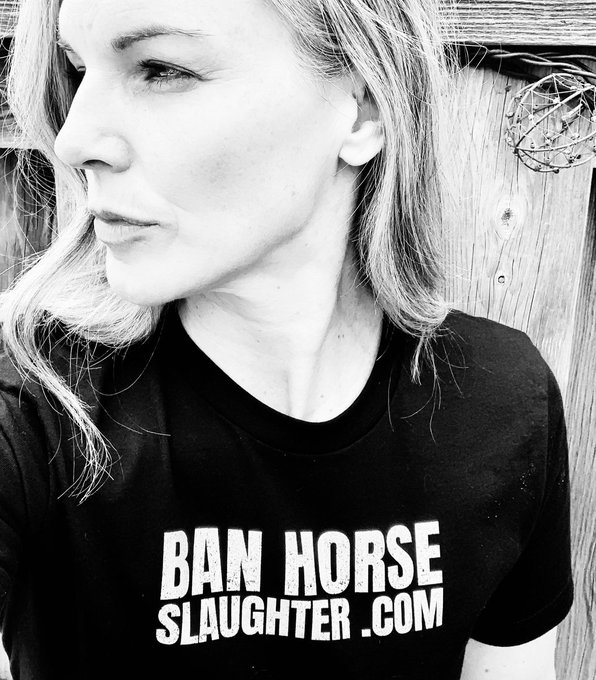
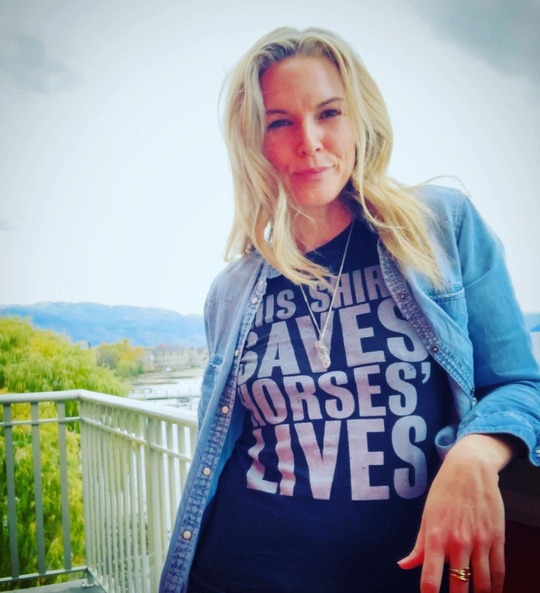
The page you requested could not be found. Try refining your search, or use the navigation above to locate the post.
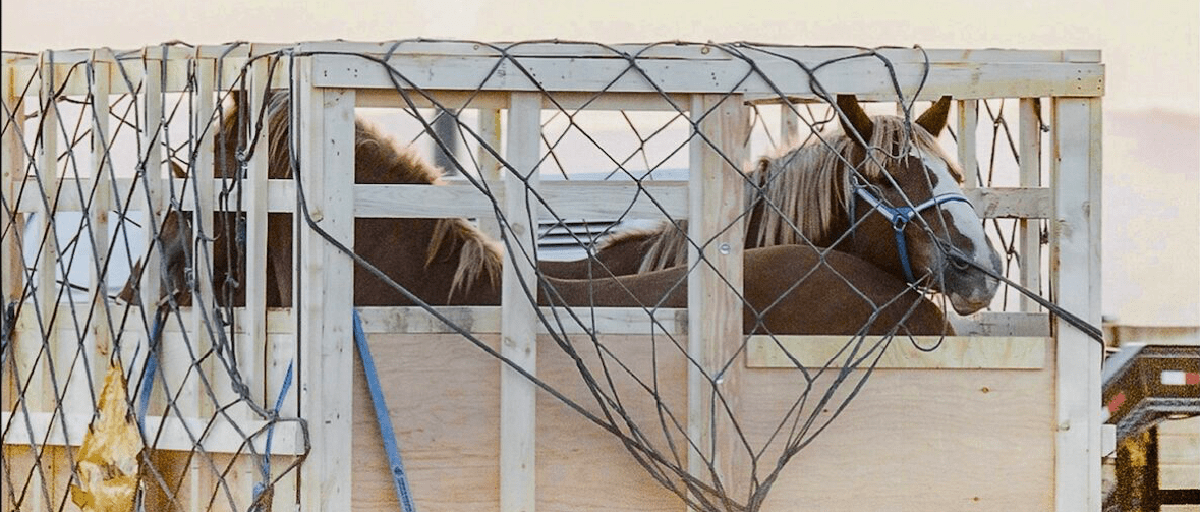
The Honourable Lawrence MacAulay, the current Minister of Agriculture and Agri-Food, has the power to end the inhumane export of horses by air for slaughter by enacting a regulatory amendment.
Help spread the word by sharing this email campaign with friends and family! You can also support the cause by donating—your contribution will help fund advertising efforts to raise awareness and push for change. Every action makes a difference!
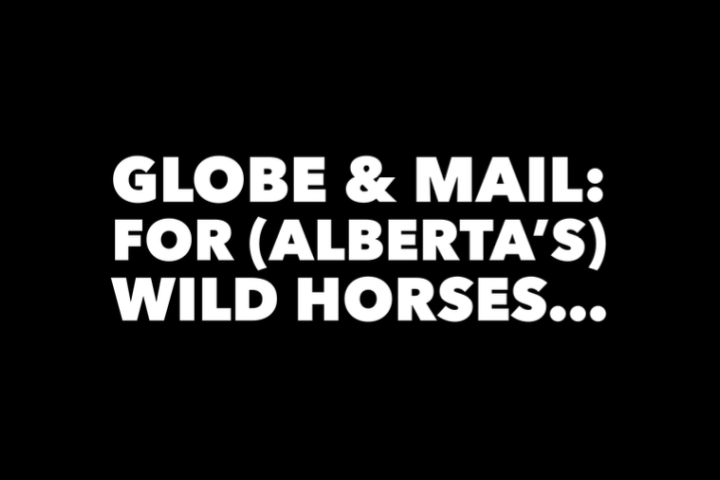
On a breezy day in June, two young stallions, chocolate-brown coats glistening, circle each other before jumping into the air and wrapping their front legs around each other’s necks. A lone white stallion disappears into a forested area nearby while other horses, in shades of grey, brown and black, blend into the rolling landscape.
But what these carefree creatures don’t know is that they are at the centre of a decade-long battle between a wild horse advocacy organization and the provincial government. At stake is the horses’ very existence.
Alberta argues it has to manage the wild horse population to prevent damage to its pasture land – it says the horses’ grazing habits contribute to ecological decline. The province has, in the past, ordered the cull of hundreds of horses.
Meanwhile, the Help Alberta Wildies Society (HAWS), which was formed in 2014 to fight a government-sanctioned slaughter, asserts that the province’s concerns are overblown and that the population must be protected at all costs.


The page you requested could not be found. Try refining your search, or use the navigation above to locate the post.
With your help we've saved 16 horses in the last few months -- horses who would otherwise have been shipped directly to slaughter -- and we currently have room to save 4 more.
Thank you to all who have so generously contributed!
UPDATE JAN. 18, 2025: It’s been a challenging whirlwind but 16 horses have been saved, 2 placed in permanent homes which means we have room to save 4 more!
Of course, the initial expense of buying horses from First Nations (or kill buyers) so they are not shipped to slaughter is not the biggest nut to crack. Hay, feed, vetting, farrier, and other costs are needed in addition to funds to initially purchase horses to prevent them from being shipped to slaughter - or being left to languish in pens awaiting the same fate.
We always hate to ask but if you are able to help we would love to be able to fill each of the foster homes before these groups of horses are shipped.
Again, we can’t save them all but with your help we can save a total of 20!



The page you requested could not be found. Try refining your search, or use the navigation above to locate the post.

The Honourable Lawrence MacAulay, the current Minister of Agriculture and Agri-Food, has the power to end the inhumane export of horses by air for slaughter by enacting a regulatory amendment.
Help spread the word by sharing this email campaign with friends and family! You can also support the cause by donating—your contribution will help fund advertising efforts to raise awareness and push for change. Every action makes a difference!
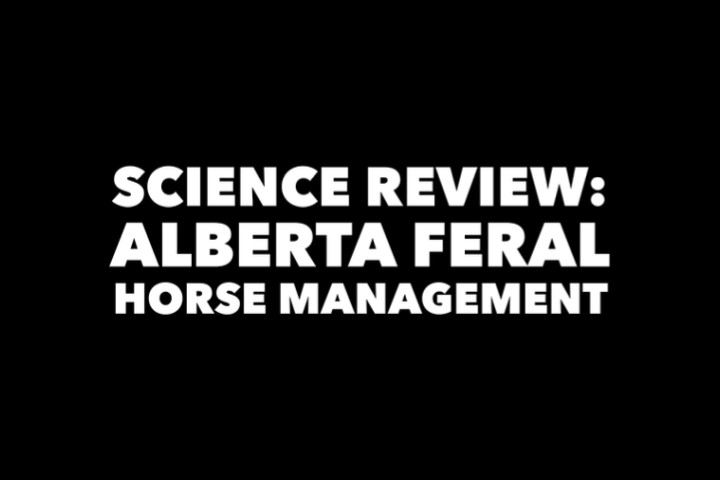
ABOUT THE AUTHOR
As a long-practicing registered professional biologist (RPBio) in British Columbia, I have had a wide range of experience in wildlife research, environmental impacts, cumulative effects analysis, and management/conservation issues in western Canada. I have headed numerous research projects, including on Chilcotin free-roaming horses, mammal inventory in Yoho National Park, grizzly bears, black bears, western toads, mountain goats, Roosevelt elk, spirit (Kermode) bears, and other species. I am well familiar with the ecology of the Alberta Foothills having mapped and studied grizzly bear habitat in Kananaskis Country for three years with Dr. Stephen Herrero, and for producing a report for Alberta Fish and Wildlife on the history of the grizzly bear in K-Country. In Alberta, I was also a waterfowl researcher on the first environmental impact study of the Athabasca Tar Sands (Syncrude), and a wildlife researcher on a gas pipeline from Chief Mountain Alberta to Trail, British Columbia.
I have conducted considerable ungulate research, including on barren-ground caribou, bighorn sheep, Roosevelt elk, and mountain goats. In 2015/2016, I carried out a professional review of feral horse management in Alberta.
Over the past 20 years, my research on wild horses in the BC Chilcotin has included field research on habitat use and response to wildfires, as well as genetic studies. I have also worked with the Xeni Gwet’in-Tsilhqot’in Nation on a wild horse management plan and guidelines for wildlife and wild horse tourism viewing. I recently published a book on my wild horse research titled The Wild Horses of the Chilcotin: Their History and Future, which won the 2024 Basil Stuart-Stubbs Prize for the best scholarly book by a Canadian author on a BC subject. It was given a starred review by the US Booklist for a work judged to be outstanding in its genre.
I have produced over 100 wildlife reports, including a number of publications in peer- reviewed journals. I have produced or co-authored three reports on Chilcotin wild horses and have been a co-author of two peer-reviewed scientific papers related to wild horses, one on the diet of Chilcotin wolves and the other on the spread of the domestic horse across the Americas, which won the prestigious 2024 AAAS Newcomb Cleveland Prize for outstanding contribution to science.
Cover Photo by Duane Star Photography


The page you requested could not be found. Try refining your search, or use the navigation above to locate the post.
With your help we've saved 16 horses in the last few months -- horses who would otherwise have been shipped directly to slaughter -- and we currently have room to save 4 more.
Thank you to all who have so generously contributed!
UPDATE JAN. 18, 2025: It’s been a challenging whirlwind but 16 horses have been saved, 2 placed in permanent homes which means we have room to save 4 more!
Of course, the initial expense of buying horses from First Nations (or kill buyers) so they are not shipped to slaughter is not the biggest nut to crack. Hay, feed, vetting, farrier, and other costs are needed in addition to funds to initially purchase horses to prevent them from being shipped to slaughter - or being left to languish in pens awaiting the same fate.
We always hate to ask but if you are able to help we would love to be able to fill each of the foster homes before these groups of horses are shipped.
Again, we can’t save them all but with your help we can save a total of 20!



The page you requested could not be found. Try refining your search, or use the navigation above to locate the post.

The Honourable Lawrence MacAulay, the current Minister of Agriculture and Agri-Food, has the power to end the inhumane export of horses by air for slaughter by enacting a regulatory amendment.
Help spread the word by sharing this email campaign with friends and family! You can also support the cause by donating—your contribution will help fund advertising efforts to raise awareness and push for change. Every action makes a difference!
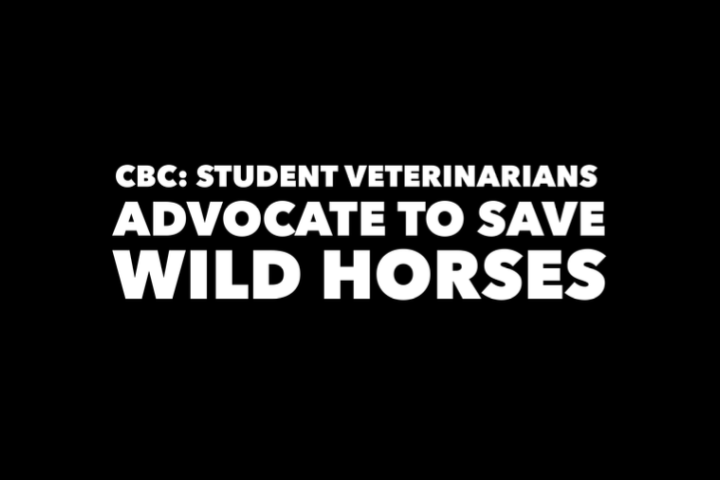



The page you requested could not be found. Try refining your search, or use the navigation above to locate the post.
With your help we've saved 16 horses in the last few months -- horses who would otherwise have been shipped directly to slaughter -- and we currently have room to save 4 more.
Thank you to all who have so generously contributed!
UPDATE JAN. 18, 2025: It’s been a challenging whirlwind but 16 horses have been saved, 2 placed in permanent homes which means we have room to save 4 more!
Of course, the initial expense of buying horses from First Nations (or kill buyers) so they are not shipped to slaughter is not the biggest nut to crack. Hay, feed, vetting, farrier, and other costs are needed in addition to funds to initially purchase horses to prevent them from being shipped to slaughter - or being left to languish in pens awaiting the same fate.
We always hate to ask but if you are able to help we would love to be able to fill each of the foster homes before these groups of horses are shipped.
Again, we can’t save them all but with your help we can save a total of 20!



The page you requested could not be found. Try refining your search, or use the navigation above to locate the post.

The Honourable Lawrence MacAulay, the current Minister of Agriculture and Agri-Food, has the power to end the inhumane export of horses by air for slaughter by enacting a regulatory amendment.
Help spread the word by sharing this email campaign with friends and family! You can also support the cause by donating—your contribution will help fund advertising efforts to raise awareness and push for change. Every action makes a difference!